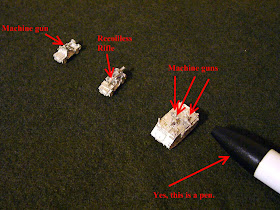
(Photo of Patrick McGoohan as John Drake in
Secret Agent)
No I'm not referring to swallowing the coded message before you memorized it.
I'm talking about acquiring a literary agent to help you publish your book or screenplay.
This PNWA Summer Conference workshop, along with the
Agents Forum was hosted by Robert Dugoni and attended by about a dozen literary agents. This gave a chance for all the attendees to see the agents en-masse and hear what each one was specifically looking for. Individual meetings between authors and agents were then conducted throughout the conference.
Below are some of the highlights of this seminar--
Literary agents are the business partners for authors and it's important to find an agent as enthusiastic as you are.
Initially you only have a few moments to pitch your book during a personal meeting with an agent, so they want to know the following:
1. Who is the protagonist?
2. What does he/she want?
3. What obstacles are in the way?
4. What is the resolution?
It's best to approach an agent with a plan. That is, to have long-term publishing goals--don't just have one book in mind.
Writing is, more often than not, a profession of rejection criticism and critique. So an author must be able to go back and re-evaluate, edit and revise his work.
The panel also advised on building a platform (see the 7 Aug 09 post).
The agents panel cited the following mistakes made when authors submit query letters:
1. Not explaining enough about the story
2. Writing too much about themselves
3. For non-fiction--lack of experience, or access to an expert on the subject they're writing about
If a writer does attract an agent's attention then he or she should avoid these blunders in their work:
1. Vague opening
2. Too much description or scene-setting
3. Too much back story
4. Not enough tension
The workshop ended with an extensive Q&A period. I didn't have any novel-length material to pitch, so I didn't pay any attention to the questions and agent responses. Instead I thought back to last year's conference where I pitched an article idea to Maria Schneider, who was the editor of
Writer's Digest, and to Ronald Kovach the Senior Editor of
The Writer.
My proposal was to highlight the advantages and disadvantages of writing within a niche market, which in my case was the wargaming hobby. Fate lent a helping hand prior to my scheduled meeting when Maria sat at our table during that evening's dinner event. Once I recognized her, I introduced myself and promptly launched into my spiel. (I'm fairly certain I let her sit down first).
The next morning I had my official meeting with Maria and in addition to repeating my pitch, I brought along some supporting articles I found on the internet. I had an equally pleasant meeting with Ronald that afternoon. At the end of each session I asked both of them for feedback on my actual pitch presentation and received two "thumbs up."
Even with my "stellar performance" neither magazine accepted my article idea. Maria is now her own boss at
Editor Unleashed and Ronald sent me a very nice "thanks-but-no-thanks" letter. Despite the outcome, I really enjoyed the experience and I now have the confidence to even do "elevator pitches." That is, being able to describe your story within the confines of an elevator before your prospective agent can escape--or push the fire alarm.
Some writers find pitching to be a nerve-wracking experience. To remedy such anxiety and in keeping with the
Secret Agent theme of this post; my suggestion would be to think of the upcoming meeting this way:
Your mission is to smuggle vital secrets--your novel--past State Security and into the hands of an allied agent. You have papers--your appointment slip--that will allow you to slip past the hired guns (conference volunteers) and reach the safe-house (Agent & Editor Appointment Room) for your not-so clandestine meeting. Just be sure to leave the cyanide pill at home...
And of course no spy story would be complete without a theme song:
http://www.youtube.com/watch?v=6iaR3WO71j4
Agents present this year were:
Emmanuelle Alspaugh, Michelle Brower, Minju Chang, Ginger Clark, Verna Dreisbach, April Eberhardt, Sorche Elizabeth Fairbank, Paul Fedorko, Sally Harding, Paul S. Levine, Matthew Mahoney, Jim McCarthy, Laurie McLean, Rebecca Oliver, Rita Rosenkranz, Meg Ruley, J.L. Stermer, Elizabeth Wales, Ted Weintsein and Page Wheeler.
The following editors were also present:
Maria Gaglioano (Penguin), Katie K. Gilligan (Thomas Dunne Books), Rose Hillard (St. Martin's Press), Kate Kennedy (Harmony and Shaye Areheart Books) and Brooke Warner (Seal Press).
For anyone interested, here's a short history of the
Secret Agent Series:
http://www.tv.pop-cult.com/secret-agent.html
 (Image from the Joseph Finder Website Press Kit)
(Image from the Joseph Finder Website Press Kit)






















